Pulled Chest Muscle
What is a Pulled Chest Muscle?
A Pulled Chest Muscle, also known as a chest muscle strain or chest muscle tear, is a common injury that can occur when the muscles in the chest are stretched or torn beyond their normal capacity. This injury often results from overuse, sudden movements, or excessive force placed on the chest muscles.
When pulled chest muscles occur, they can trigger sudden and intense pain that spreads across the chest area. The good news is that pulled chest muscles are typically minor injuries that generally heal within a few days or a few weeks.
People experiencing pulled chest muscles might encounter harsh, sharp pain specifically in this region. Despite the discomfort, a pulled chest muscle is usually a minor issue that manages to heal within a short term.
In this article, we’ll examine the underlying causes of pulled chest muscles and possible cures. We will further explain how to separate these symptoms from those caused by different kinds of pain in the chest.
The pectoralis major, pectoralis minor, serratus anterior, and subclavius are the four primary muscles that make up the pectoral area, which is located on the anterior chest wall and affects the upper limb.
This discussion explores the complex innervation, attachments, and actions of these muscles in the pectoral area.
Which are the chest muscles?
Pectoralis Major:
The most superficial muscle is the pectoralis major, which is prominently positioned in the pectoral area. It has a sternal head, a clavicular head, and a strong, fan-like structure:
- Attachments: The clavicular head arises from the anterior surface of the medial part of the clavicle bone. The sternocostal head arises from the anterior surface of the sternum bone, the superior six costal cartilages, and the aponeurosis of the external oblique muscle. Both heads connect inferiorly to the intertubercular sulcus of the humerus bone.
- Function: It pulls the scapula anteriorly and skillfully adducts and medially rotates the upper limb. Additionally, the clavicular head performs an independent role in flexing the upper limb.
- Innervation: The medial and lateral pectoral nerves control their innervation.
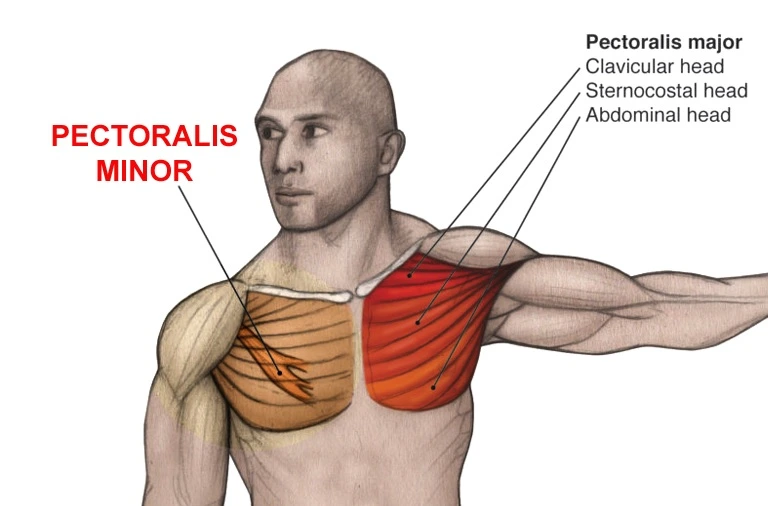
Pectoralis Minor
The pectoralis minor and pectoralis major work together to form the anterior axilla area, nestled beneath its bigger counterparts.
- Attachments: It attaches to the scapula at the coracoid process and originates from the third to fifth ribs.
- Function: It pulls the scapula anteriorly and inferiorly against the thoracic wall, stabilizing it.
- Innervation: Its innervation is controlled by the medial pectoral nerve.
Serratus Anterior
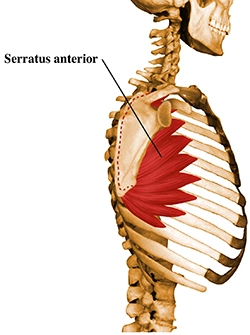
The serratus anterior, which is located laterally within the chest wall, establishes the medial boundary of the axilla area.
- Attachments: It grows from the lateral sides of ribs 1 to 8 and consists of numerous strips. These strips attach to the medial scapular border’s costal (rib-facing) surface.
- Function: It holds the scapula against the ribs and facilitates scapular rotation, allowing arm elevation beyond 90 degrees.
- Innervation: Its innervation is controlled by the long thoracic nerve.
Subclavius
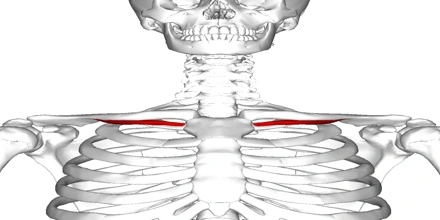
The very small muscle known as the subclavius extends horizontally and is located just beneath the collarbone. In cases of clavicular fractures or other injuries, it offers minimal protection to underlying neurovascular tissues.
- Attachments: It attaches to the middle third of the inferior surface of the clavicle after emerging from the point where the first rib and its costal cartilage meet.
- Function: Its function includes both securing and pushing the clavicle.
- Innervation: The subclavius nerve controls its innervation.
Mechanism of Injury
A pulled chest muscle often develops as a result of overexertion or weakness of the muscles rather than from ordinary everyday activity. Direct trauma from falls or vehicle accidents, as well as hits from contact sports like hockey, are some of the causes of this. Additionally, this issue may be exacerbated by frequent torso twisting.
Following are some scenarios that might result in a pulled chest muscle:
- Direct blows to the ribs may result from slips and falls, auto accidents, or collisions in contact sports like football and ice hockey. The ribs are abruptly pulled apart by this powerful contact, which can cause the intercostal muscles to strain or rupture.
- Twisting of the torso can occur while lifting weights, dancing, practicing yoga, or playing sports like tennis and golf. If the torso is twisted too much during these movements, the ribs may be stretched beyond their normal range.
- lifting items above shoulder level regularly or engaging in prolonged overhead motions. These movements put an unnecessary strain on the muscles, which is a common observation when performing chores like painting ceilings.
What are the Symptoms of Pulled Chest Muscles?
When the muscles in the chest wall are injured, a person may experience the following symptoms:
- Discomfort that gets worse when the chest or upper spine is moved.
- Deep breaths, sneezing, or coughing might make discomfort worse.
- The existence of a painful or sensitive spot inside the chest wall.
- Suffering from upper back pain.
Chest discomfort caused by a pulled chest muscle can frequently become aggravated by coughing and movement. The following are typical signs of a pulled chest muscle:
- Chest discomfort can range from being acute to being dull.
- Chest discomfort that worsens while moving the chest or upper spine.
- Reduced range of motion in the chest or the injured area.
- Increased chest discomfort while coughing, sneezing, or taking heavy breaths.
- Swelling around the chest.
- Bruises that appear on the chest.
- Spasms in the muscles occur.
- A feeling of pain or discomfort along the chest wall.
- Lower back pain.
It’s significant to remember that serious health disorders that need quick medical treatment might also be indicated by chest discomfort. Chest discomfort can be a symptom of serious conditions such as heart attacks, pulmonary embolisms, and pneumonia. It is advised to seek medical care right away if you suffer from any kind of chest pain for the reason to ensure a reliable diagnosis and the most appropriate method of treatment.
What are the Causes of Pulled Chest Muscles?
There are several things that might cause a chest muscle strain to happen. The following are some of the familiar reasons:
- Excessive Physical Exertion: Chest muscle strains can result from engaging in strenuous physical activities or workouts without a suitable warm-up. Particularly if the activity is novel or rare, the danger increases.
- Improper Lifting Techniques: Pulling a chest muscle when carrying large goods is more likely when improper lifting techniques are used.
- Pulled chest muscles can also be caused by sudden trauma or impact, such as those sustained in auto accidents.
- Falls: Unintentional falls have the potential to result in chest muscle injuries.
Apart from these causes, several risk factors can elevate the chance of experiencing a chest muscle pull:
- Age: Growing older can result in weaker muscles and a lower ability to endure tension, which increases the likelihood of muscle strains.
- Obesity: Being overweight increases the chance of a pull by putting more tension on the muscles.
Chest wall strains might have several causes, including:
- Injuries caused by sports that result from overstretching, muscular exhaustion, or repetitive hand motions.
- Injuries brought on by close touch.
- Inadequate warm-up before exercising.
- Lifting large objects.
- Restricted adaptability.
- Stretching the torso’s normal range of motion.
- Extending your reach overhead.
- Persistently bad posture.
- Falls.
- A lot of coughing.
To minimize the danger of a chest muscle pull and to take the proper measures, it is crucial to be aware of these variables and risk factors.
Other causes of chest pain
It’s important to differentiate between a pulled muscle in the chest wall and potentially serious heart or lung problems since doing so enables people to seek quick medical care when required.
The following are some more causes of chest pain:
Heart Attack:
Pain from a heart attack is different from that of a pulled chest muscle. Pain from a heart attack may be subtle or include a bothersome pressing feeling in the chest.
This discomfort typically starts in the middle of the chest and may radiate to one or both arms, the back, neck, jaw, or belly.
The discomfort could last for many minutes before sporadically fading and reappearing.
Additional signs of a heart attack include:
- Shortness of breath
- Sudden cold sweat
- Nausea
- Dizziness
Angina Pectoris:
Coronary heart illness is the cause of angina pectoris or stable angina. It appears when arterial constriction or blockage prevents enough blood from getting to the heart.
Although the symptoms resemble a heart attack, they usually pass in about five minutes. Usually brought on by effort, they go away with rest or medicine.
Pleuritis:
Pleuritis, or pleurisy, entails inflammation of the lung lining, usually triggered by a bacterial or viral infection.
Pleuritis-induced pain can simulate pulled chest muscle sensations sharp, abrupt, and intensified during inhalation. Pleuritis may be accompanied by fever and muscular discomfort, unlike muscle strain. For a precise diagnosis, a medical examination is advised, including a lung auscultation.
Pneumonia:
Infections cause the air sacs in the lungs to swell with fluid or pus, which is pneumonia. It can be brought on by a number of pathogens, including bacteria, fungi, and viruses.
Pain from pneumonia may be piercing or acute, and it may get worse when you cough or take heavy breaths. Additional pneumonia signs and symptoms include:
- Cough-producing discolored or bloody mucus
- Shortness of breath
- Fever
- Chills
- Excessive sweating and clammy skin
- Loss of appetite
- Confusion
- Fatigue
Pulmonary Embolism:
Pulmonary embolism results from lung blood vessel blockage, often caused by blood clots. A medical emergency is preventing blood from getting to the lungs.
Pulmonary embolism can cause symptoms like:
- Shortness of breath
- Cough with potential blood production
- Feeling faint, dizzy, or lightheaded
- Rapid heartbeat
How to diagnose Pulled Chest Muscles?
Individuals concerned about a pulled chest muscle or any chest discomfort should consider consulting a physician, especially if they are unsure of the cause of the problem.
A doctor will ask about symptoms, medical history, and any activities that could have caused or provoked the pain during an appointment.
Muscle strains can be divided into two groups:
- Acute Strains: Result from immediate injuries, such as those sustained from direct traumas like falls or car accidents.
- Chronic Strains: Develop as a result of long-term activity, such as the repeated motions frequently linked with sports or particular occupational duties.
Depending on the severity, the doctor will assign one of the following grades if a muscle strain is determined to be the cause:
- Grade 1 (Mild Damage): Involves less than 5% damage to individual muscle fibers. Minimal impairment of strength and motion is observed. Recovery generally spans 2 to 3 weeks.
- Grade 2 (Moderate Damage): Affects a larger portion of individual muscle fibers without complete rupture. Noticeable loss of strength and motion occurs. Healing might necessitate 2 to 3 months.
- Grade 3 (Complete Rupture): This is characterized by a total muscle rupture. Physical examination may reveal a defect within the muscle. Surgical intervention could be required for reattachment in severe cases.
Sometimes, medical professionals will conduct testing to rule out conditions including heart attacks, bone fractures, and other possible reasons. Electrocardiograms (ECG), magnetic resonance imaging (MRI), or X-rays may be used during these examinations.
The following are some more causes of chest pain:
- Bruising from Injury
- Anxiety Attacks
- Peptic Ulcers
- Digestive Disruptions, like Esophageal Reflux
- Pericarditis
There are more serious options to think about:
- Angina (Reduced Blood Flow to the Heart)
- Pulmonary Embolism (Blood Clot in Lung’s Pulmonary Artery)
- Aortic Dissection (Tear in the Aorta)
Management for Pulled Chest Muscles
The recovery time for a pulled chest muscle depends on its severity, it typically ranges from a few days to around 8 weeks, but in extreme situations it can take much longer, occasionally resulting in upper back pain. Patients are first advised to relax for a few days and use ice within the first 48 hours to lessen inflammation.
It is advised to use a cushion to support the affected area when taking deep breaths and coughing.
Treatment approaches contain:
RICE Protocol:
- Rest: Avoid vigorous activities, especially those that exacerbate muscle strain.
- Ice: Apply an ice pack wrapped in a towel for up to 20 minutes, multiple times daily.
- Compression: Use a compression bandage to support the region and get advice from a healthcare practitioner on the best way to wrap it.
- Elevation: Maintain an upright position or use additional pillows while sleeping to elevate the chest.
Doctors frequently advise following the RICE protocol within 24-48 hours of injury.
Medical Management:
- Pain-relieving medications like acetaminophen to intercept pain signals.
- Muscle relaxants for acute severe pain, reducing muscle tension and spasms.
- Anti-inflammatory drugs.
Surgery:
- In cases of complete muscle rupture, surgery might be recommended to repair the tear.
Physical Therapy:
- Physical therapy commences after the inflammation subsides, focusing on pain relief modalities, supervised stretching, endurance-enhancing strength exercises, posture improvement, and breathing techniques.
- Breathing exercises involve diaphragmatic breathing while using a stabilizing pillow for the painful area.
Stretching:
- Stretching and strengthening chest muscles can prevent injury. The pectoral stretch involves clasping hands behind your back and bending forward.
- The door chest stretch is done against a doorframe, with arms at 90-degree angles.
Strengthening Exercises:
- Engage in warm-ups and gradually increase workout intensity.
- Effective chest-strengthening exercises include push-ups, chest presses, flyes, pull-ups, chin-ups, and lat pull-downs.
Rehabilitation:
- Doctors may prescribe customized exercise regimes to restore muscle function, strength, and flexibility.
Complications
Pushing yourself too hard too quickly can potentially exacerbate or worsen your injury. The signals that come from your body must be given special attention.
Chest injuries can lead to complications that impact your breathing. There may be a higher risk of acquiring a lung infection if your strain interferes with breathing or limits deep breaths. To help with this, your healthcare professional could suggest a specific breathing practice.
How Can You Prevent Pulled Muscle In Chest?
A strained chest muscle can be caused by a number of things, such as bad posture, inappropriate exercise methods, and even unpleasant sleeping positions. Fortunately, you may take preventative steps to avoid such occurrences:
- Prioritise Warm-ups: Make sure you follow a suitable warm-up program before beginning any physical activity. This lowers the risk of damage by preparing your muscles for the approaching activity.
- Adopt Correct Form: Maintain proper form, especially while lifting weights or conducting exercises. By properly distributing the weight, this reduces stress on weak points.
- Regular Stretching: Regular stretching workouts improve the flexibility and toughness of your muscles, which lowers the chance of muscle pulls.
- Maintain Posture: Practise proper posture throughout your everyday activities and physical activity. The chest muscles are supported and tension is reduced by proper alignment.
- Best Sleeping Postures: Steer clear of postures that put undue strain on the chest. Choose postures that are comfortable while minimizing stress.
The chest muscles, being extensive and heavily engaged, are more prone to injury. Research suggests that warming up primes muscles for activity, diminishing the injury risk. Stretching regularly and maintaining proper form throughout exercises are other ways to prevent chest muscle injuries.
You may significantly reduce your risk of developing a torn chest muscle by taking these steps. By giving your chest muscles the correct care and attention, you can keep them strong and resilient over time.
Conclusion
In conclusion, a pulled chest muscle is a common injury that can occur due to overexertion, sudden movements, repetitive motions, or inadequate warm-up. Symptoms typically include chest pain, tenderness, swelling, and reduced range of motion.
Treatment involves rest, ice, compression, elevation, over-the-counter pain relievers, and, in some cases, physical therapy. Seeking medical advice is important to assess the severity of the injury and determine the most appropriate course of action.
Additionally, taking preventive measures, such as proper warm-up and exercise techniques, can help reduce the risk of future chest muscle strains. If you suspect a pulled chest muscle, it’s essential to address it promptly to facilitate a full recovery and minimize complications.
FAQ
How long time does a pulled chest muscle take to cure?
If the strain is benign, anticipate it to settle within a few days/weeks. Intense strains can take 2 months/longer to recover. If the chest ache attaches roughly for more than 12 weeks, it is regarded as chronic & may result from prolonged period actions & repetitive movements.
Is it normal to have a pulled chest muscle?
Anyone can encounter chest muscle strain: More aged people have a more elevated chance of encountering chest wall damage from falls. Adults may be additionally likely to experience chest pulls/injuries as a consequence of car accidents/athletic movements. Children are the most inferior danger group for chest muscle damage.
Can gas cause chest pain?
Yes, When it is trapped in the upper stomach, backed-up intestinal gas can generate extreme chest pain. In reality, some individuals may wonder if they are maintaining a heart attack & not just required to fart.
How to sleep with a pulled chest muscle?
Elevating the upper body a little can reduce stress on the intercostal muscles of the chest. Put a pillow underneath the upper back & head to construct a soft incline. This can relieve pressure on the ribcage & make breathing more comfortable. Side-sleeping pose.
What will a doctor do for a pulled chest muscle?
For extreme/persistent aches, a doctor may prescribe more powerful painkillers, muscle relaxants, and both to decrease sore muscle cramps. Occasionally, a pulled muscle in the chest is because of a constant cough. Taking cough drugs can assist in controlling coughing, minimizing additional strain on the intercostal muscles of the chest.

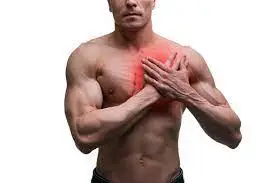
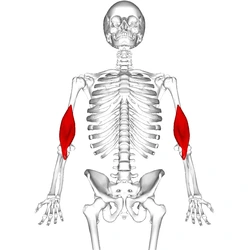
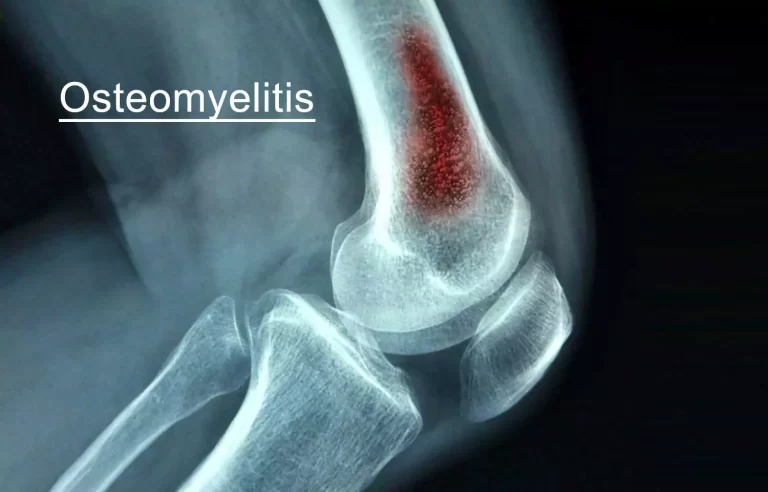
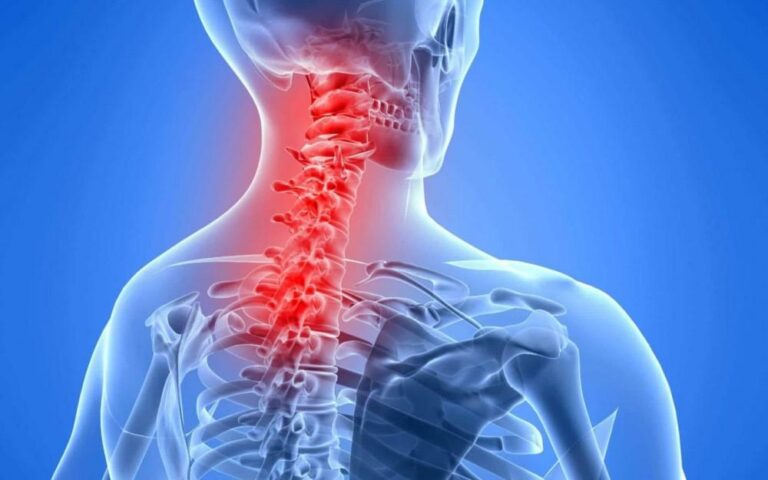
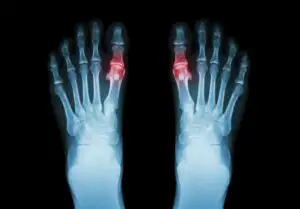
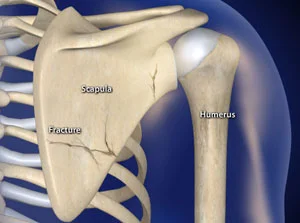
One Comment